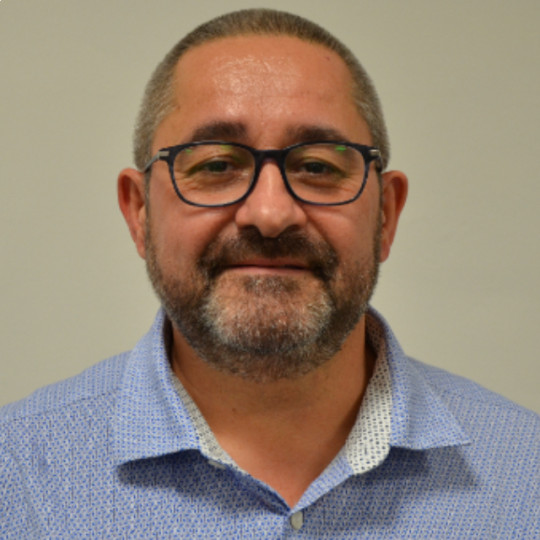Context
Since the 1960s, a group of specialist scientists in the field of pesticide analysis has been concerned about the quality and standardisation of chemical (quantification of the active substance) and physico-chemical (behaviour of the product when diluted, usually in water) analysis methods. This led to the establishment of the Collaborative International Pesticides Analytical Council (CIPAC), an international, independent body set up to standardise and circulate pesticide analysis methods validated at a global level. Since the creation of this body, the Management Board has included a representative of the Unit. In addition, from 1968 to 1987, our representative (J. HENRIET) acted as Secretary and Chair of CIPAC. Over the years, this body has established itself as one of the leaders in pesticide analytical methods, working in parallel with the AOAC (for whom pesticides are just one of many priorities). International organisations such as the FAO and the WHO have also become concerned about the quality of pesticide products placed on the world market and have requested that their quality specifications be based on methods validated in international collaborative studies, such as those proposed by CIPAC. The European Union Member States and the United States currently use these methods in connection with their pesticide registration legislation (approval). Many other countries use them for pesticide testing. Since CIPAC was set up, based on its experience in agricultural and non-agricultural pesticide analysis, the Plant Protection Products and Biocides Physico-Chemistry and Residues Unit has participated in collaborative studies and developed or proposed them to pesticide manufacturers.
Objectives
The aim of this project is to develop analytical methods for active substances in technical and formulated materials. These methods are verified internationally and presented in a standardised form. Since 1994, the implementation of Good Laboratory Practice (GLP) also enhances the quality of results and traceability. The use of high-tech methods, such as gas and liquid chromatography coupled with mass spectrometry, allows identification of any impurities occurring during the manufacturing processes. Physico-chemical research is also a high-tech area in our Unit since the behaviour of formulations when diluted significantly influences their efficacy or behaviour in the environment. This is why in addition to the CIPAC methods, the laboratory also validates, in accordance with international standards, the analytical methods intended for use in the approval of pesticides.
Description of tasks
In collaboration with other research centres working within the context of CIPAC or AOAC and also with the laboratories of manufacturers of plant protection or public health products, the laboratory proposes and develops chemical and physico-chemical methods with a view to their international validation.
Results obtained
During recent months, the laboratory has participated in collaborative studies relating to: d allethrin (TC, MV), bioallethrin (TC, MV), S-bioallethrin (TC), deltamethrin (TC, SC, WG, EC, TA) , dinetofurane (TC, WP, SG), esbiothrin (TC, MV), glyphosate (TC, SL), parathion-methyl (CS), d-phenothrin (TC, AE), prallethrin (TC, AE) , novaluron (TC, EC), SZI-121 (TC, SC). In collaboration with the DAPA, a German standardisation group, and NEGAG, a Dutch group, new physico-chemical analysis methods have been developed for rinsing and pouring SCs, the emulsion stability of ECs, EWs and MEs. The laboratory is also interested in analyses of formulations containing several active substances (possibly in various forms), their impurities, isomers and enantiomers, adjuvants etc. Particular attention is also being given to new formulation types (soluble bags {SB}, aqueous suspo-emulsions {SE}, emulsifiable granules {EG} etc.).
Contribution
The Plant Protection Products and Biocides Physico-Chemistry and Residues Unit is responsible for developing and validating analytical methods for proposed formulations, it participates in international collaborative studies and proposes new ones (B. de Ryckel, V. Lecocq, M. Baes and C.Cornet). Dr. ir.O. Pigeon: Member of CIPAC Management Board.
Partners
Dr. M. Müller – Swiss Federal Research Station, CIPAC Chairman (markus.mueller@faw.admin.ch). CIPAC: http://www.cipac.org Dr M. Zaim: WHO Pesticide Evaluation Scheme (WHOPES) – WHO/HQ – Geneva - Switzerland - (Zaimm@who.int) Dr G. Vaagt: FAO Pesticides Management Group, Plant Production and Protection Division. FAO, Rome, Italy (Gero.Vaagt@fao.org). The scientific members of CIPAC (South Africa, Germany, Australia, Brazil, Cyprus, France, Greece, Hungary, India, Netherlands, Slovenia, Romania, Untied Kingdom, Switzerland, USA). A. Dubois, Federal Agency Laboratory for the Safety of the Food Chain (AFSCA), Liège, Belgium. Pesticide manufacturers, including well known multinationals as well as local or international manufacturers of generic substances.
Funding
- CRA-W - Walloon Agricultural Research Centre










